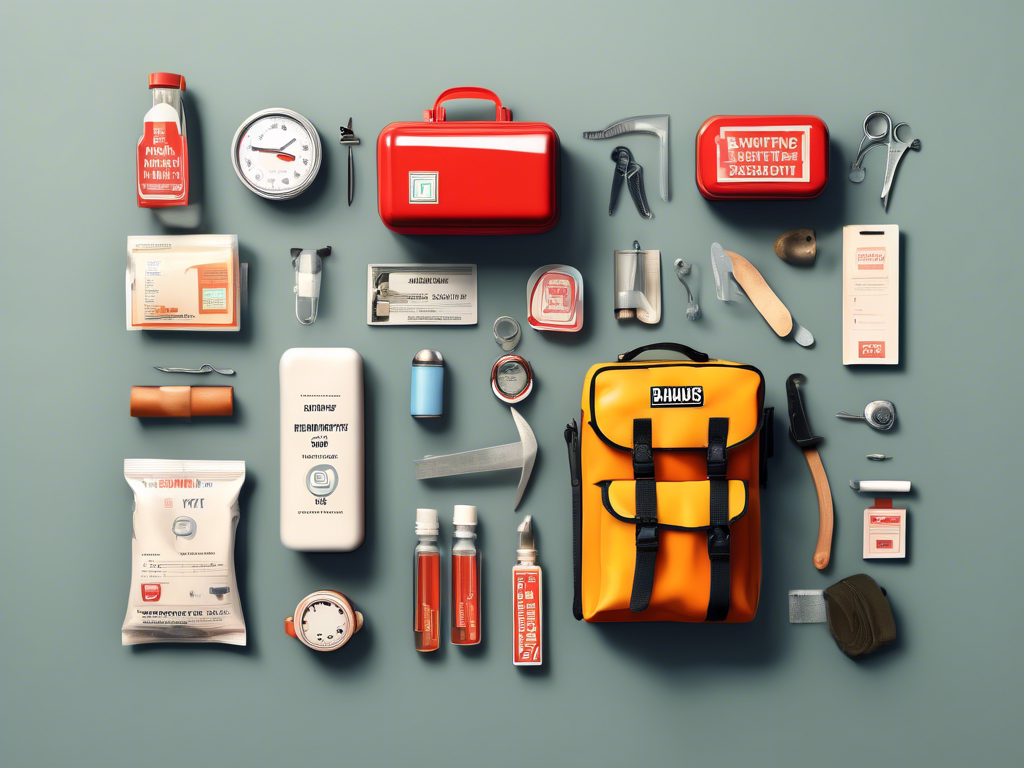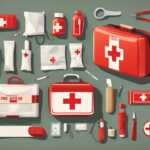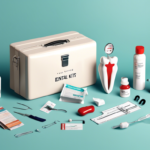When disaster strikes, being ill-prepared can lead to dire consequences. No one wants to find themselves in an unexpected situation without the necessary supplies at hand. This is where understanding the importance of an emergency kit comes into play. Whether you’re facing a natural disaster, a health emergency, or a sudden power outage, having the right essentials can mean the difference between chaos and calm.
Building an effective emergency kit requires knowing what items are crucial for various situations. From basic survival gear to personal safety essentials, each component plays a vital role in ensuring your readiness for any unexpected events. In this guide, we will delve deeply into the emergency kit items you simply cannot afford to skip, explore a DIY approach to assembling your perfect kit at home, and provide examples tailored for families and pets alike.
Our goal is to equip readers not just with knowledge, but also with a practical framework that empowers them to prepare. As we move through the essential contents of an emergency kit, you’ll discover how to customize it for unique situations and even how to do so on a budget. By the end of this article, you will have a comprehensive understanding of what to include in your emergency preparedness plans, ensuring your safety and that of your loved ones.
Top 10 Emergency Kit Items You Can’t Afford to Skip
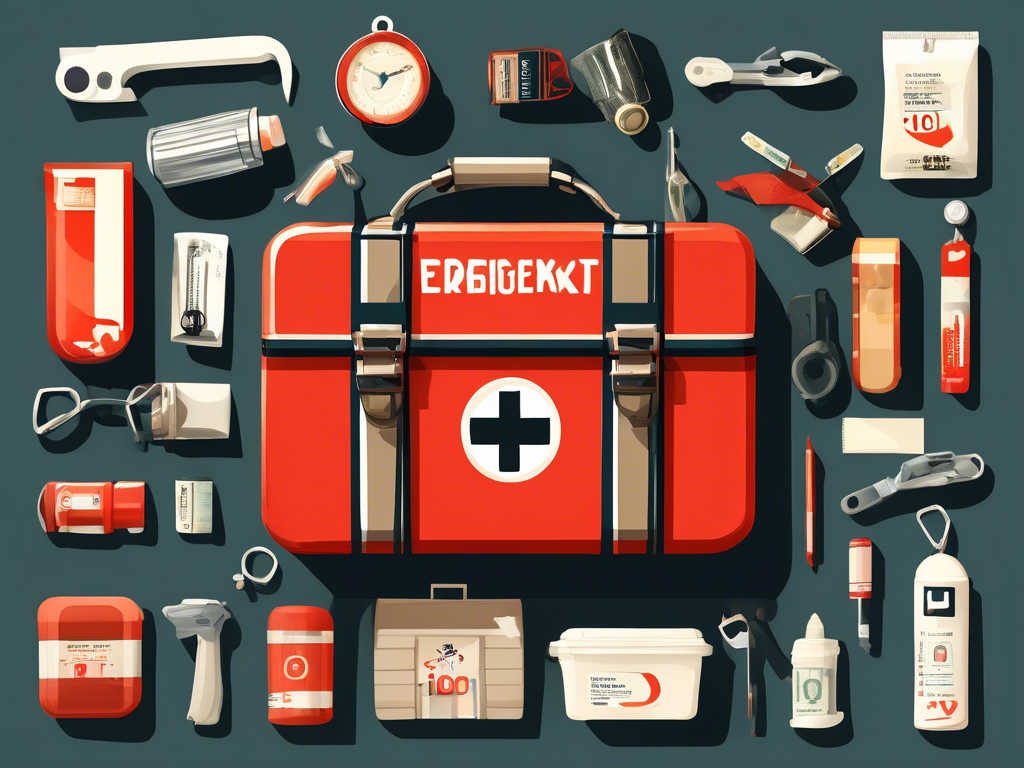
1. First Aid Supplies
Every emergency kit should include a comprehensive first aid kit. This is crucial for treating minor injuries and can even help in more serious situations until professional help arrives. Your emergency kit contents should encompass adhesive bandages, antiseptic wipes, sterile gauze pads, and adhesive tape. Essential medications like pain relievers, antihistamines, and any personal prescriptions should also be included. 🩹
2. Non-Perishable Food and Water
When preparing your emergency kit DIY, don’t forget to stock up on non-perishable food items such as granola bars, dried fruits, or canned goods. It’s recommended to keep at least a three-day supply of food and one gallon of water per person per day. Consider adding a portable water filtration system for longer-term emergencies! 🚰
3. Multi-Tool or Swiss Army Knife
A multi-tool is a versatile item that can serve many purposes during an emergency. Your emergency kit things should include a tool with knives, screwdrivers, and can openers. This single device can replace multiple tools and is invaluable when you need to improvise solutions quickly. 🛠️
4. Flashlight and Extra Batteries
Power outages can occur in emergencies, making a flashlight essential for navigation or signaling for help. Ensure your emergency kit example includes a reliable flashlight along with extra batteries. Consider using LED flashlights for longer battery life and durability. 🔦
5. Blankets and Warm Clothing
Hypothermia can occur even in mildly cold weather if you are unprepared. It’s wise to have thermal blankets or sleeping bags readily available in your emergency kit contents. Additionally, pack an extra set of warm clothing, including socks and gloves, to stay comfortable in various scenarios. 🧣
6. Whistle and Signal Mirror
If you’re in a situation where you need to signal for help, a whistle can be heard from far away, much better than yelling. A signal mirror can also draw attention in daylight. These items are small but incredibly important additions to your emergency kit things. 📣💡
7. Local Maps
GPS devices may fail during emergencies due to power outages or lack of signal. Keeping local maps in your emergency kit example can help you navigate unfamiliar areas. Make sure to have both road maps and topographical maps if you venture into natural terrains. 🗺️
8. Personal Hygiene Items
Maintaining personal hygiene is essential during emergencies to prevent infections. Include items like hand sanitizer, wet wipes, toothbrush, toothpaste, and feminine hygiene products in your emergency kit contents. This not only provides comfort but also promotes health. 🚿
9. Important Documents
Gather copies of important documents such as identification, insurance papers, and medical records. Keep them in a waterproof container within your emergency kit DIY. In emergencies, having access to this information can save you time and hassle. 📃
10. Communication Devices
Having a way to communicate is vital during emergencies. Whether it’s a fully charged mobile phone, a two-way radio, or a satellite phone, include communication devices in your emergency kit things. Don’t forget to add portable chargers or power banks as well! 📱🔊
DIY Guide: Building Your Perfect Emergency Kit at Home

Assess Your Needs
Before diving into your emergency kit DIY, it’s crucial to assess your specific needs. Consider factors like the size of your household, any special medical requirements, and the types of emergencies you might encounter. For instance, families with young children or elderly members may need additional items tailored to their situations. Creating a checklist can help ensure that all necessary emergency kit items are accounted for. 📝
Gather Essential Supplies
Start by collecting essential supplies that belong in every emergency kit. Here’s a basic list of emergency kit contents you should consider:
– **First Aid Supplies:** A well-stocked first aid kit is non-negotiable.
– **Water and Food:** Sufficient water and non-perishable food will keep you nourished.
– **Tools:** Don’t forget a multi-tool or Swiss Army knife.
– **Lighting:** A flashlight with extra batteries is vital for power outages.
Ensure that these items are easily accessible whenever you need them! 📦
Customize Your Kit
Your emergency kit example should reflect your unique circumstances. For instance, if you live in an area prone to natural disasters, you might want to add a portable radio, local maps, or even a tent. Tailor your emergency kit things to include items that may not be commonly found in traditional kits but are essential for your lifestyle. 🌧️🌪️
Regularly Update Your Kit
An emergency kit DIY is not a one-time project. Regularly check and update your kit to replace expired items and adapt to changing needs. Set a reminder twice a year to review your supplies. This is also a great opportunity to involve your family in the process and educate them on the importance of being prepared! 🔄
Store Your Kit Appropriately
Where you choose to store your kit matters. It should be in a cool, dry place that is easily accessible during an emergency. Consider using a waterproof container to protect valuable emergency kit contents. Make sure everyone in your household knows its location and how to use the items within it. Keeping an inventory checklist on top of the kit can also help in case you need to restock later. 🗃️
Educate and Practice
Once you’ve built your emergency kit DIY, it’s important to educate your household about its contents and their uses. Conduct regular drills or discussions to familiarize everyone with the items and procedures necessary during an emergency. Practicing ensures readiness and can significantly lower panic levels when actual emergencies arise. 💪👨👩👧👦
Essential Emergency Kit Contents for Natural Disasters
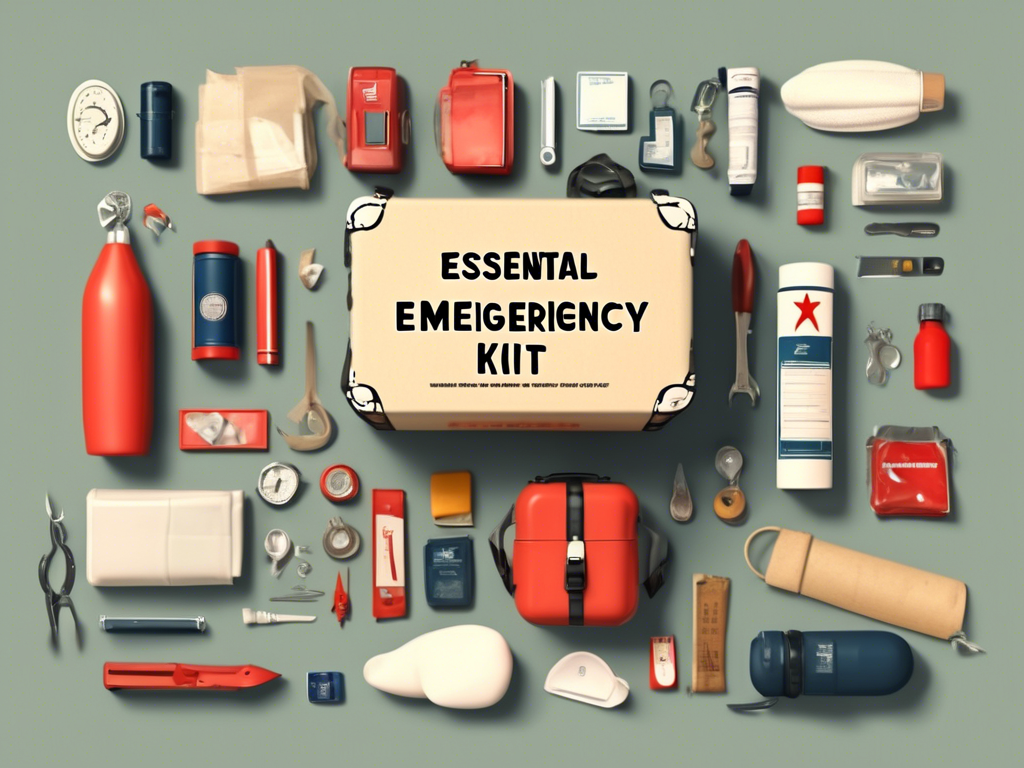
Water and Water Purification Supplies
Having sufficient water is critical during natural disasters. Your emergency kit contents should include at least one gallon of water per person per day for at least three days. Additionally, it’s wise to add water purification tablets or a portable filtration system, especially if you might be in a situation where fresh water is scarce. 💧
Non-Perishable Food Items
When putting together your emergency kit DIY, consider including non-perishable food items that are easy to prepare and consume. Examples of essential emergency kit items include:
– Canned goods (vegetables, fruits, meats)
– Granola bars or protein bars
– Dried fruits and nuts
– Instant meals or freeze-dried options
Make sure to have enough food to last at least three days! 🍫🥫
First Aid Kit and Personal Medications
A well-equipped first aid kit is indispensable for treating injuries during emergencies. Ensure your emergency kit example includes bandages, antiseptics, and essential medications. Also, don’t forget personal prescriptions that may be necessary for family members—it’s crucial to have these readily available when needed most. 🩹💊
Emergency Blankets and Clothing
Maintaining warmth is essential during adverse weather conditions. Include thermal blankets or sleeping bags in your emergency kit things to help protect against hypothermia. Additionally, pack an extra set of warm clothing, including hats, gloves, and socks, to ensure comfort during long waits for rescue or recovery. 🧥🧣
Multi-Functional Tools and Supplies
A multi-tool or Swiss Army knife is another vital addition to your emergency kit contents. This device can serve numerous functions—cutting, screwing, and opening cans—making it invaluable in various scenarios. Also, consider including duct tape and zip ties for their versatility in securing items and making temporary repairs. 🛠️🔧
Communication and Signaling Devices
In emergencies, keeping in touch with loved ones or rescuers is crucial. Your emergency kit DIY should include a battery-operated or hand-crank emergency radio to receive updates and alerts. Adding a whistle and a signal mirror can enhance your visibility and communication capabilities when help is needed. 📡📣
The Ultimate Emergency Kit Example: What to Include

Essential Food and Water Supplies
When compiling your emergency kit example, one of the most critical components is a sufficient supply of food and water. Aim for at least one gallon of water per person per day, along with non-perishable food items that are easy to prepare and consume. Great choices include:
- Canned goods (vegetables, fruits, tuna)
- Granola or protein bars
- Dried fruits and nuts
- Instant meals or freeze-dried options
These provisions should ideally last for at least three days to ensure nourishment during emergencies. 🚰🍫
First Aid and Personal Care Items
No emergency kit items list would be complete without a comprehensive first aid kit. Your emergency kit contents should feature bandages, antiseptics, and gauze. Additionally, don’t overlook personal medications and hygiene products such as hand sanitizer, wet wipes, and feminine hygiene items. These essentials promote health and comfort during stressful times! 🩹🚿
Lighting and Communication Tools
A power outage can be common in emergencies, so having reliable lighting sources is crucial. Ensure your emergency kit DIY includes a high-quality flashlight and extra batteries. Moreover, incorporate communication devices like a battery-operated radio or a two-way radio to stay informed and connected. Consider adding a whistle and signal mirror for emergency signaling as well. 🔦📡
Clothing and Shelter Supplies
Maintaining warmth and comfort is vital during emergencies. As part of your emergency kit example, include thermal blankets or sleeping bags designed for emergencies. Additionally, pack an extra set of warm clothing—such as socks, gloves, and hats—to protect against cold conditions. If possible, add a small tent or tarp to provide shelter if needed. 🧥🏕️
Multi-Tools and Utility Supplies
Versatility is key when it comes to emergency kit things. A multi-tool or Swiss Army knife can serve multiple purposes, from cutting to screwing. Additionally, consider incorporating duct tape, zip ties, and rope for their usefulness in various situations, like making repairs or securing items. These tools can make all the difference during a crisis! 🛠️🔧
Documentation and Emergency Plans
Lastly, don’t forget to include important documents in your emergency kit contents. Gather copies of identification, insurance papers, and any essential medical records. Keep these in a waterproof container to protect them from damage. Crafting an emergency plan and having it accessible in your kit ensures that everyone knows what to do and where to go during a crisis. 📃📝
Must-Have Emergency Kit Things for Family Safety
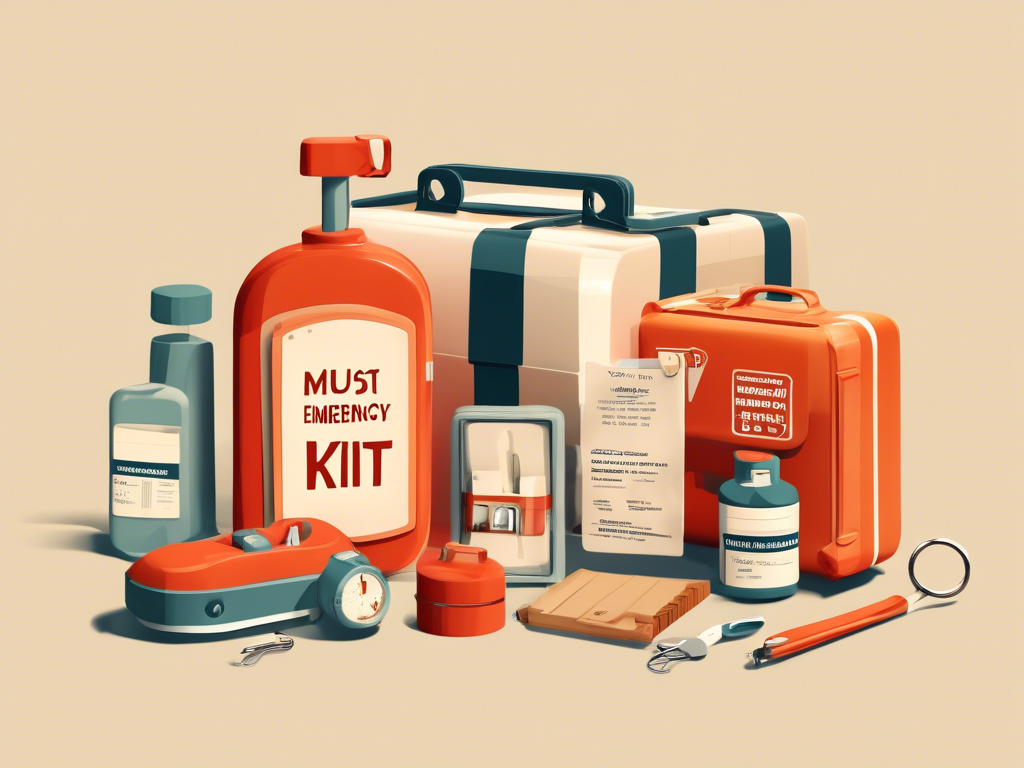
Basic First Aid Supplies
In any emergency situation, having basic first aid supplies can be a lifesaver. Your emergency kit contents should include items like adhesive bandages, antiseptic wipes, and gauze pads. It’s also wise to pack some over-the-counter medications such as pain relievers and antihistamines. This ensures that you can manage minor injuries or ailments when professional help may not be immediately available. 🩹
Water Purification Tools
Access to clean water is vital during emergencies. Your emergency kit DIY should incorporate water purification tablets or a portable filtration system. These tools allow you to convert potentially contaminated water sources into drinkable water. Ensure you have at least one gallon of water per person per day included in your kit, along with these purification devices to safeguard your family’s health! 💧
Portable Food Supply
Non-perishable food items are critical for sustaining energy in emergencies. When assembling your emergency kit items, consider including:
- Canned vegetables and meats
- Granola bars and protein bars
- Peanut butter or nut-based spreads
- Dried fruits and nuts
These foods are easy to pack, require no refrigeration, and can provide essential nutrients during stressful times. Make sure you have enough to last at least three days! 🍫🥫
Emergency Lighting and Signaling Devices
Power outages often accompany emergencies, making lighting essentials necessary. Your emergency kit example should definitely contain a reliable flashlight with extra batteries. Additionally, don’t forget about signaling devices, such as a whistle and a signal mirror. These small but powerful items can help draw attention and communicate your location if needed! 🔦📣
Comfort and Warmth Items
Staying warm can be crucial during emergencies, especially in adverse weather. Include thermal blankets, sleeping bags, or hand warmers in your emergency kit contents. Also, packing an extra set of warm clothing, including socks and gloves, will help ensure that your family stays comfortable while waiting for help or shelter. 🧥🧣
Communication Tools
In an emergency, staying connected is vital. Your emergency kit things should feature a battery-operated or hand-crank emergency radio to stay informed about updates. Also, keep a fully charged mobile phone or two-way radios for direct communication. Don’t forget to include portable chargers or power banks in case of power outages to maintain connectivity! 📱🔊
How to Customize Your Emergency Kit for Unique Situations

Consider Your Environment
The first step in customizing your emergency kit contents is understanding your environment. If you live in an area prone to natural disasters like hurricanes, earthquakes, or wildfires, you’ll need specific items tailored to those threats. For example, you might add extra water purification tablets and high-energy food bars for longer emergencies. Residents in colder climates should consider thermal blankets and hand warmers, ensuring that they have the right supplies for their unique circumstances. 🌪️🏔️
Include Personal Health Needs
Everyone has different health needs, so it’s essential to consider personal medications when assembling your emergency kit DIY. Make a list of any prescription medications needed by family members and include a sufficient supply to last at least a week. In addition to medications, pack items such as allergy medications, asthma inhalers, or diabetic supplies. This ensures that your emergency kit items cater to everyone’s health requirements! 💊👩⚕️
Plan for Pets
Don’t forget about your furry friends! If you have pets, tailor your emergency kit example to include supplies for them as well. Essential items may include:
- Pet food (enough for several days)
- Water and portable bowls
- A leash or harness
- Pet first aid supplies
- Comfort items, such as a toy or blanket
Including these emergency kit things will make sure your pets stay safe and comfortable during emergencies. 🐾🥣
Incorporate Emergency Entertainment and Comfort Items
In emergency situations, especially if you experience extended waiting periods, having comfort items for children and adults can be helpful. This could include:
– Books or comics
– Board games or card games
– Small toys for younger children
These emergency kit contents can help to keep morale up and provide some distraction from the stress of the situation. It’s crucial to make your kit not only functional but also comforting during challenging times. 📚🎲
Evaluate Potential Threats
Your emergency kit DIY should also be influenced by the specific threats present in your region. For example, if you’re near a flood zone, consider adding a waterproof bag for important documents. If you’re in a remote area, additional navigation tools such as a compass or local maps can guide you where GPS might fail. Identifying the most likely scenarios allows you to better prepare with precise emergency kit items suited to your circumstances. 🗺️🌊
Store Your Kit for Easy Access
Lastly, ensure your customized emergency kit items are stored in an easily accessible location. Consider using clear containers so you can quickly identify contents. Labeling your kits can also simplify the process when retrieving needed supplies during a crisis. Remember, an effectively stored kit helps ensure that your family can act quickly without confusion when every second counts! 📦⏱️
Emergency Kit Essentials: Tailoring Items for Pets
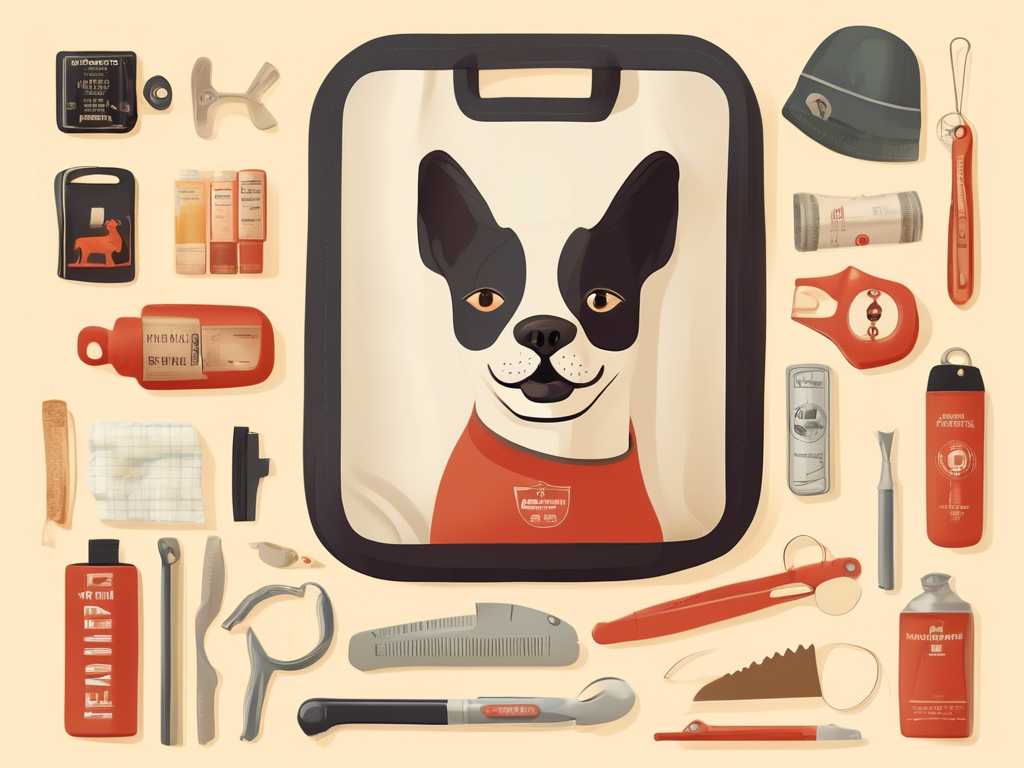
Why Include Pet Supplies in Your Emergency Kit?
When preparing your emergency kit DIY, it’s vital to remember that pets are part of your family. Just like you, they may become stressed during emergencies and require specific supplies. Tailoring your emergency kit contents to include items for your pets ensures their health, safety, and comfort during uncertain times. 🐾
Essential Supplies for Pet Care
To create a well-rounded emergency kit for your furry friends, consider including the following emergency kit items:
- Pet Food: Pack sufficient food that can last at least three days. Consider moisture-resistant containers or resealable bags for easy storage.
- Water: Ensure you have enough fresh water along with portable bowls for feeding and hydration.
- Leash and Harness: Keep a sturdy leash and harness on hand for safe transportation when navigating emergency situations.
- First Aid Supplies: Include a pet-specific first aid kit containing bandages, antiseptic wipes, and any medications your pet may need.
- Comfort Items: Bringing along a favorite toy or blanket can help soothe your pet and reduce stress. 🧸
Documents and Identification for Your Pets
Just as you store important documents in your emergency kit example, it’s wise to have documentation regarding your pets. Include copies of:
- Vaccination records
- Microchip information
- Any relevant medical history
Keeping these emergency kit things in a waterproof container ensures you have access to essential information in case of evacuation or medical needs. 📃
Planning for Evacuations With Pets
In the event of an evacuation, having a plan that includes your pets is crucial. Make sure to have a designated container for your emergency kit contents that is easily transportable. Familiarize your pets with carriers or crates, so they can be handled with ease during stressful times. Practice drills with your pets can also help them acclimate to being moved quickly if necessary. 🚙🐶
Additional Considerations for Various Pets
Different types of pets require unique care, so tailoring your emergency kit DIY should reflect this diversity. For instance, if you have small animals such as rabbits or guinea pigs, consider adding:
- Extra bedding material for comfort
- Transport cages for security during travel
- Specific dietary needs, like hay or pellets for herbivores
Taking into account the different emergency kit items needed for each pet type ensures that all family members, both two-legged and four-legged, are cared for during emergencies. 🐰🌟
Budget-Friendly Emergency Kit Items That Work Wonders
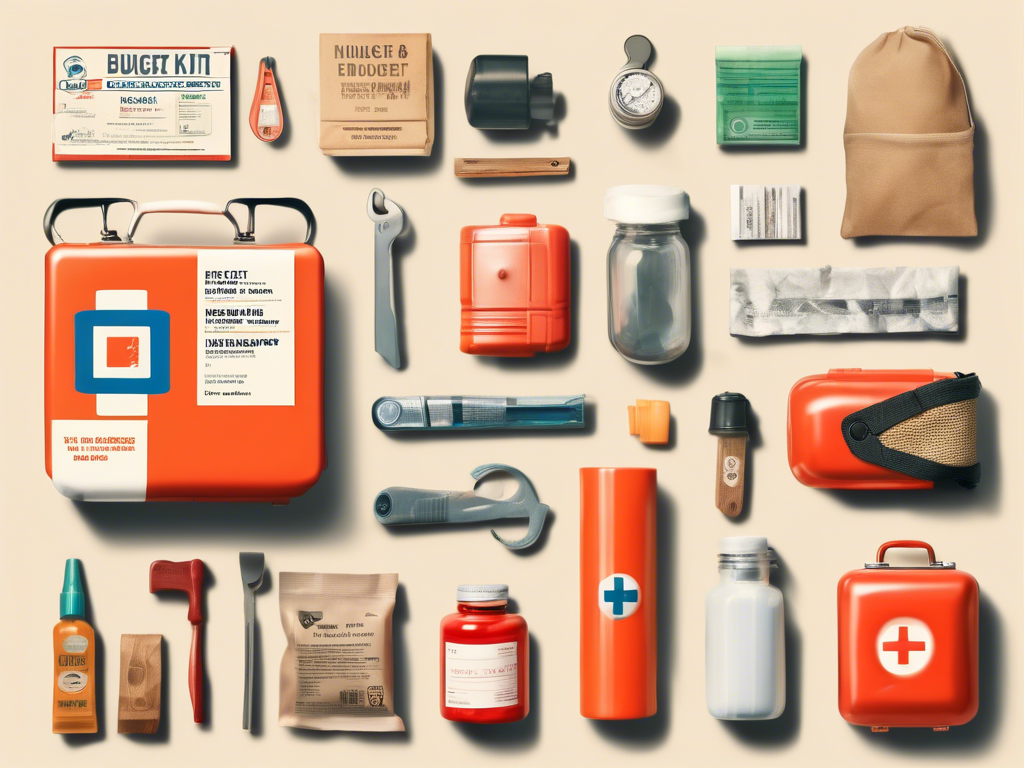
Affordable First Aid Supplies
Creating a well-rounded emergency kit DIY doesn’t have to break the bank. You can find affordable first aid supplies at discount stores or online retailers. Essential items include adhesive bandages, antiseptic wipes, and gauze pads. Additionally, consider making your own saline solution for cleaning wounds using water and salt—this is a simple and cost-effective alternative! 🩹
DIY Food Options
Instead of purchasing expensive pre-packaged meals, consider including homemade dehydrated meals in your emergency kit contents. You can dehydrate fruits and vegetables or create meal kits that only require water for preparation. Items like rice, pasta, and beans are budget-friendly staples that provide nutrition during emergencies. Store these in airtight bags to keep them fresh. 🍚🍝
Repurposed Household Items
Many household items can serve multiple purposes in your emergency kit things. For example, old toothbrushes can be repurposed for cleaning wounds and small areas, while empty pill bottles can hold matches or small amounts of medication. Using what you already have not only saves money but also helps you think creatively about your emergency kit example. ♻️
Handmade Multi-Tools
While multi-tools can be pricey, you can easily create a basic tool kit using household items. Gather items like scissors, a screwdriver, and pliers from around your home and compile them in a durable pouch. This DIY approach allows you to customize your kit based on your needs while keeping costs low. 🛠️
Low-Cost Lighting Solutions
Flashlights and candles are essential for emergencies, but they don’t have to be expensive. Collect unused candles from around your home, or search for battery-operated lights at dollar stores. You can even make homemade lanterns using jars and tea lights. These budget-friendly alternatives will help illuminate your way during power outages! 🔦🕯️
Creating a Comprehensive Communication Plan
Communication devices can be costly, so consider establishing a low-tech communication plan for your family. Write down important contact information, such as phone numbers and addresses, and store them in your emergency kit contents. Additionally, practice using these methods during drills to ensure everyone knows how to stay connected in case of an emergency without relying solely on technology. 📞✉️
Emergency Preparedness: Organizing Your Emergency Kit Effectively
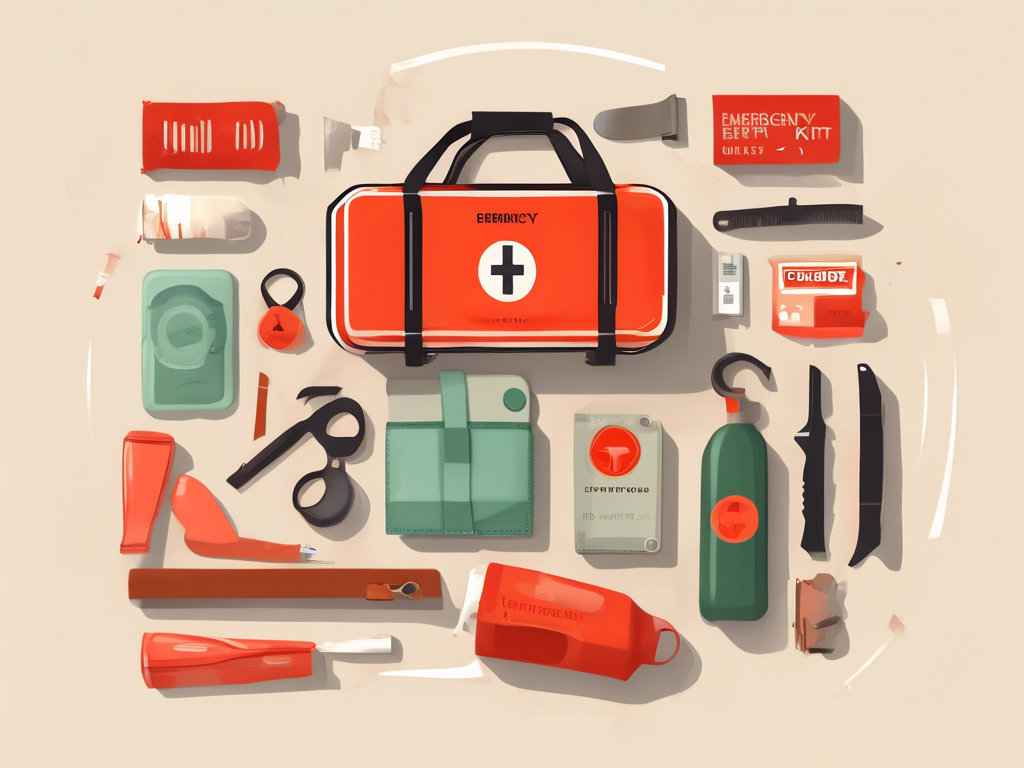
Assessing the Contents of Your Kit
To effectively organize your emergency kit contents, start by assessing what you currently have and what is missing. Make a checklist of essential emergency kit items based on your local hazards, family needs, and personal preferences. Not only should you include the basics like food, water, and first aid supplies, but also consider unique situations such as medical needs or pet supplies. Regularly reviewing these items ensures that your kit is always up to date and adequately stocked. 📝
Categorizing Emergency Kit Items
Organizing your emergency kit DIY into categories can vastly improve efficiency during an emergency. You might break it down into segments such as:
– **Health and Safety:** First aid supplies, personal medications, hygiene products.
– **Food and Water:** Non-perishable snacks, bottled water, and purification tablets.
– **Tools and Equipment:** Multi-tools, flashlights, batteries.
– **Comfort and Warmth:** Blankets, clothing, and entertainment items.
Labeling each category will help you quickly locate necessary items when time is of the essence. 📦
Utilizing Waterproof Containers
When organizing your emergency kit example, consider using waterproof containers to protect your supplies from damage due to water or humidity. Use transparent bins that allow for easy visibility of contents, or resealable bags for individual items. Keep your documents in a waterproof pouch within your kit to ensure that important information remains intact. This step will safeguard your essential emergency kit things and make retrieval seamless during emergencies. 🌧️🛡️
Regular Maintenance and Updates
An emergency kit DIY should not be a one-time project; it requires ongoing maintenance. Schedule biannual checks to replace expired supplies, add new items as your family’s needs change, and remove any unnecessary clutter. During these reviews, take stock of your emergency kit contents and ensure everything is in working order. This proactive approach guarantees that your kit is prepared for any situation that may arise. 🔄
Educating Your Family Members
Finally, once your emergency kit things are well organized, educate all household members about its contents and importance. Conduct drills to familiarize everyone with what’s included and where to find specific items. Having a family emergency plan that integrates your kit can boost confidence and preparedness, making sure everyone knows how to react during an actual emergency. Engaging your family in this process fosters a sense of security and teamwork. 💪👨👩👧👦
Summing up
In conclusion, preparing an emergency kit is an essential task that everyone should undertake, irrespective of their location or lifestyle. Throughout this article, we’ve highlighted a variety of crucial components, from food supplies and medical necessities to comfort items suitable for family members and pets. The emergency kit example outlined serves as a solid foundation, demonstrating how you can adapt your preparations based on individual needs and potential risks.
Moreover, successfully organizing your emergency kit goes beyond merely selecting items; it involves strategic planning and regular updates to accommodate changing circumstances. This practice not only protects you during crises but also fosters peace of mind in your everyday life. As we face an unpredictable world, the ability to respond efficiently in emergencies can significantly boost our confidence and resilience.
We encourage you to take action today: assess your current emergency kit contents, identify gaps, and begin crafting or upgrading your kit. Remember, preparedness is not just about survival—it’s about making informed decisions that safeguard your home and keep your loved ones safe. Don’t wait until it’s too late; start building your emergency kit now, and ensure you are ready for whatever situations may arise.
